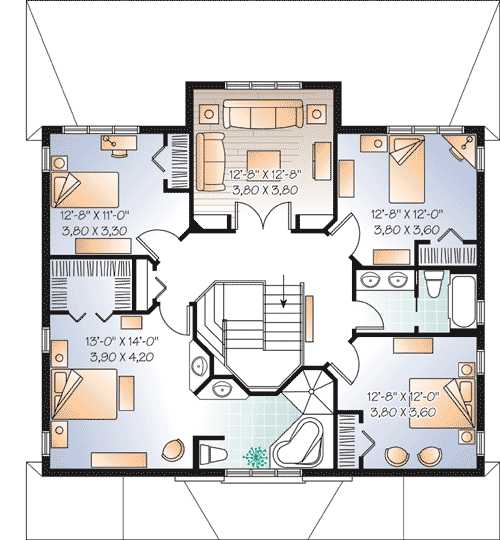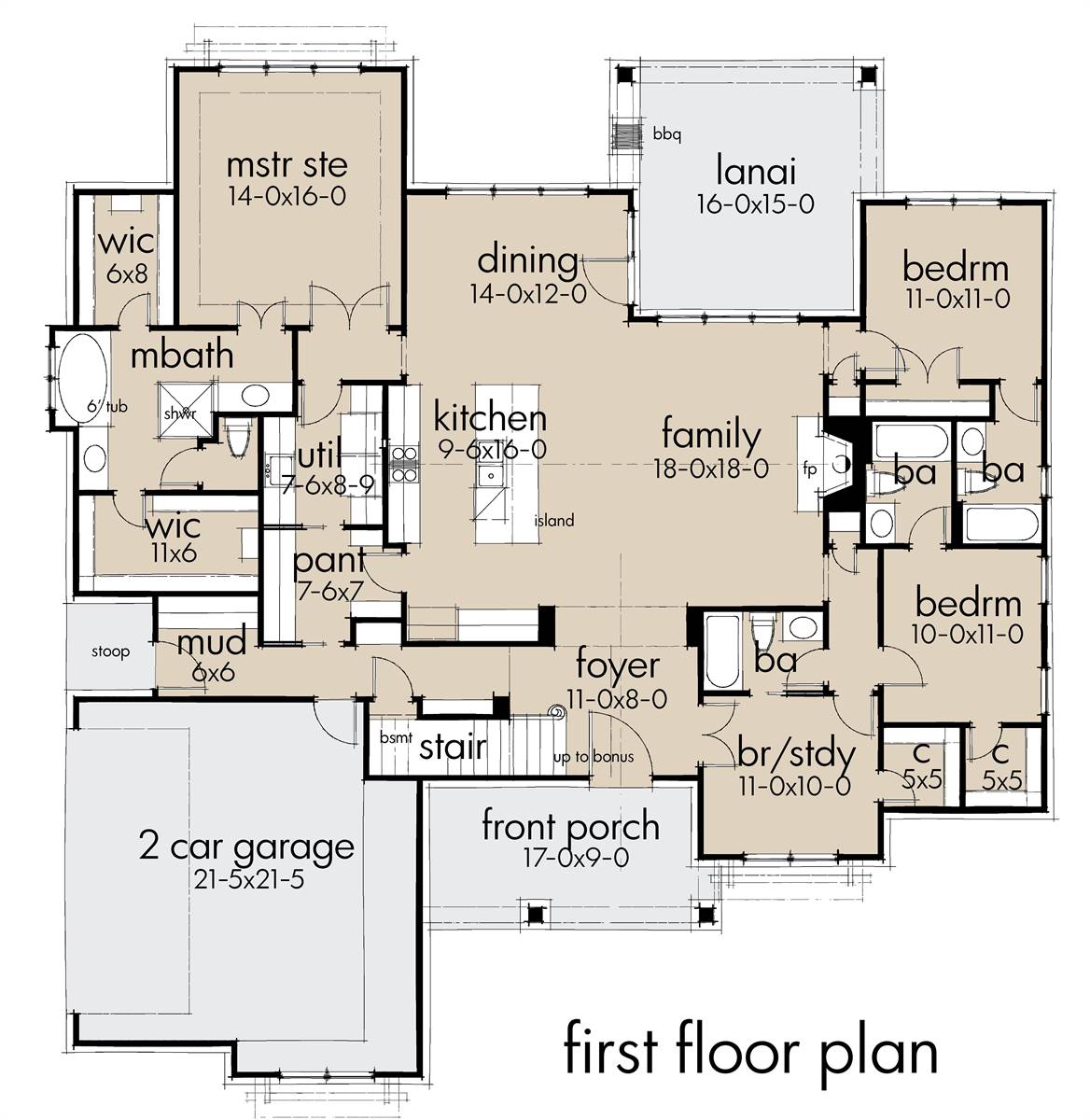In-Law Suite Floor Plans: Creating Multi-Generational Harmony in Your Home

The In-Law Suite: A Modern Solution for Multi-Generational Living
In today’s world, where family dynamics are evolving and multi-generational living is becoming increasingly common, the concept of an in-law suite has gained immense popularity. This dedicated space within your home offers a perfect solution for accommodating aging parents, adult children, or other loved ones, fostering a sense of community and support while maintaining individual privacy and independence.

Why Choose an In-Law Suite?
An in-law suite is more than just an extra room; it’s a carefully designed space that caters to the unique needs of both the primary residents and the suite’s occupants. Here are some compelling reasons why you might consider adding an in-law suite to your home:
1. Enhanced Family Connections:

- Close Proximity: An in-law suite allows for frequent interaction and shared meals, fostering a strong sense of family unity.
- Shared Experiences: Grandparents can be actively involved in their grandchildren’s lives, creating lasting memories and enriching everyone’s experience.
- Emotional Support: Having loved ones nearby provides a sense of security and emotional support, especially for aging parents or individuals with special needs.


2. Increased Home Value and Investment:
- Market Appeal: In-law suites are highly desirable features that increase a home’s value and appeal to a wider range of buyers.
- Rental Potential: The suite can be rented out to generate income, offsetting the cost of construction and providing financial flexibility.
- Future-Proofing: An in-law suite allows for future adaptability, accommodating changing family needs and providing a potential space for long-term care.



3. Flexibility and Independence:

- Privacy and Autonomy: The suite provides a separate living space with its own entrance, ensuring privacy and independence for both parties.
- Accessibility Features: In-law suites can be customized to meet the needs of individuals with mobility limitations, ensuring a comfortable and safe living environment.
- Personalized Design: The suite can be designed to reflect the unique preferences and lifestyle of the occupants, creating a welcoming and comfortable space.

4. Practical Benefits:

- Caregiving Support: An in-law suite provides a convenient location for family members to provide care for loved ones who need assistance.
- Reduced Care Costs: Having a family member nearby can significantly reduce the cost of professional care, offering a cost-effective alternative.
- Home Modifications: In-law suites can be designed to accommodate specific needs, such as wheelchair accessibility, grab bars, and walk-in showers.


Planning Your In-Law Suite: A Comprehensive Guide
1. Design Considerations:
- Location: Choose a location that offers privacy and convenient access to common areas of the home.
- Size and Layout: Determine the optimal size and layout based on the intended use and the number of occupants.
- Accessibility: Ensure the suite meets accessibility standards for individuals with mobility limitations.
- Natural Light and Ventilation: Maximize natural light and ventilation to create a bright and airy space.
- Storage Solutions: Plan for ample storage space to accommodate personal belongings and household items.
2. Essential Features:
- Separate Entrance: A private entrance provides independence and reduces disturbance to the main living area.
- Kitchenette: A kitchenette with essential appliances like a refrigerator, microwave, and sink allows for self-sufficiency.
- Bathroom: A full bathroom with a shower or tub provides convenience and privacy.
- Living Area: A comfortable living area with seating, a TV, and possibly a fireplace creates a welcoming space for relaxation.
- Bedroom: A spacious bedroom with adequate storage space provides a comfortable and private retreat.
3. Budget and Construction:
- Cost Estimation: Obtain accurate estimates from contractors to determine the overall cost of construction.
- Financing Options: Explore financing options such as home equity loans or construction loans to fund the project.
- Building Permits: Obtain necessary permits from local authorities before starting construction.
- Contractor Selection: Choose a reputable contractor with experience in building in-law suites.
4. Legal and Insurance Considerations:
- Building Codes: Ensure the suite complies with local building codes and zoning regulations.
- Insurance Coverage: Update your homeowner’s insurance policy to include the in-law suite.
- Property Taxes: Consult with a tax professional to understand the impact of the in-law suite on your property taxes.
5. Interior Design and Furnishing:
- Style and Aesthetics: Choose a design style that complements the existing home and reflects the occupants’ preferences.
- Furniture Selection: Choose comfortable and functional furniture that maximizes space and creates a welcoming atmosphere.
- Color Palette and Lighting: Use a calming color palette and adequate lighting to enhance the ambiance of the suite.
FAQs about In-Law Suites
1. How much does it cost to build an in-law suite?
The cost of building an in-law suite varies depending on factors such as location, size, materials, and complexity of the project. On average, you can expect to spend anywhere from $20,000 to $100,000 or more. It’s essential to obtain detailed estimates from contractors to get an accurate assessment of the cost.
2. What are the legal requirements for building an in-law suite?
Building codes and zoning regulations vary from location to location. It’s crucial to consult with your local building department to understand the specific requirements for your area. You may need to obtain permits, meet accessibility standards, and comply with other regulations.
3. Can I rent out my in-law suite?
In most cases, yes. However, there may be restrictions based on local zoning regulations and homeowner’s association rules. Check with your local authorities and review your HOA documents to determine if renting out the suite is permitted.
4. What are the tax implications of having an in-law suite?
The tax implications of an in-law suite can vary depending on how it is used and your local tax laws. If you rent out the suite, you may need to report rental income and expenses on your taxes. It’s advisable to consult with a tax professional for guidance.
5. How do I ensure the privacy of both the primary residents and the in-law suite occupants?
Privacy is a key consideration when designing an in-law suite. You can achieve this through a combination of factors, including:
- Separate Entrance: A private entrance ensures that the occupants of the suite can come and go without disturbing the main household.
- Soundproofing: Proper insulation and soundproofing materials can minimize noise transfer between the suite and the main living area.
- Dedicated Living Spaces: Design the suite with distinct living areas, such as a separate bedroom, bathroom, and kitchenette, to provide a sense of privacy.
- Clear Boundaries: Establish clear boundaries and expectations for shared spaces and amenities to ensure both parties feel comfortable and respected.
Conclusion: Creating a Home for All Generations
An in-law suite is a valuable investment that can enhance family connections, increase home value, and provide flexibility for future needs. It’s a thoughtful solution for multi-generational living, allowing families to stay connected while maintaining individual privacy and independence.
By carefully planning and designing your in-law suite, you can create a welcoming and comfortable space that fosters a sense of community and supports the well-being of all generations.

